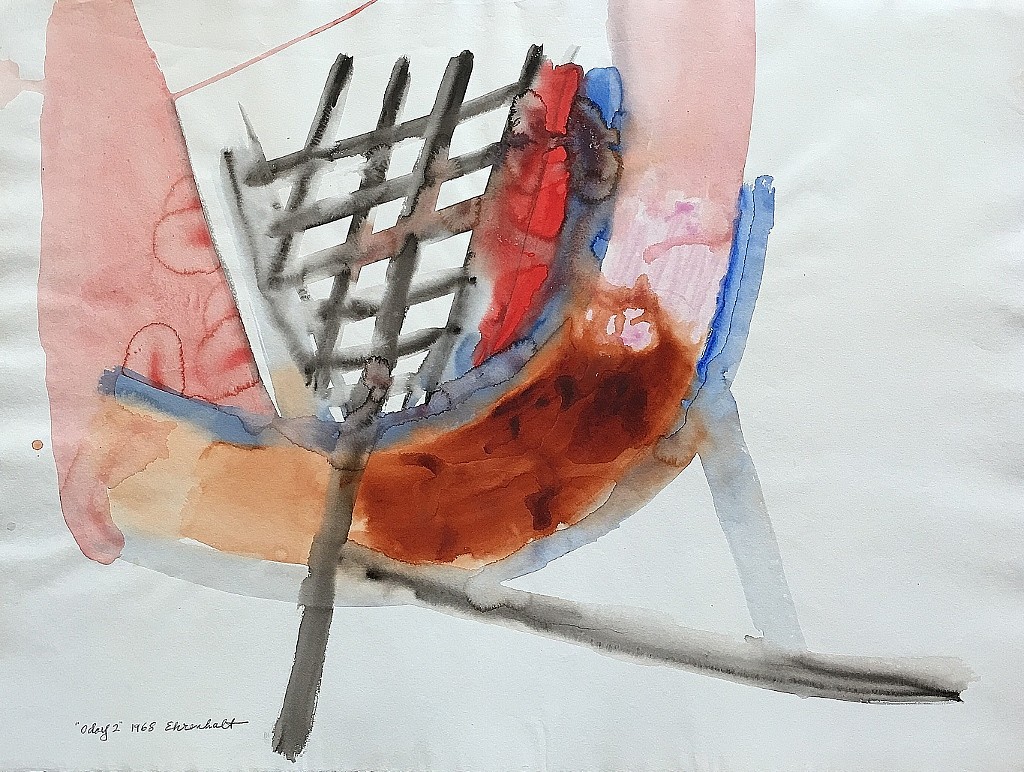PRESS RELEASE

Amaranth Ehrenhalt: 1968
Apr 4 – Apr 25, 2019
1968 was a year of seismic social and political change across the globe. From the burgeoning anti-Vietnam war and civil rights movements in the United States, protests and revolutions in Europe and the first comprehensive coverage of war and resultant famine in Africa, the world would never be the same again. A partial listing of events summons up just what an earthquake year 1968 was: The Tet Offensive, the My Lai Massace, the assassinations of Martin Luther King, Jr. and Robert F. Kennedy, the passage of the Civil Rights Act of 1968, Prague Spring, the Biafran War. In Paris, massive student demonstrations would ultimately drive Charles de Gaulle from power.
Certainly the arts were not immune from the spirit of the times. In formal terms, much of the art first made or shown in 1968 seems to reveal a transformation as profound as that in the political climate. Gallery exhibitions and theoretical writings defined radical new aesthetic initiatives. Conceptual art challenged the premises of modernism, attempting a far-reaching redefinition of the nature of art. The appearance of new media, new modes of organization, and a generation of young, iconoclastic artists suggested the emergence of a new sensibility. More than ever, artists began to explore issues of race, gender, and sexuality. The American flag itself became a pop culture phenomenon.
Amaranth Ehrenhalt, a young American expatriate artist in Paris, was herself exposed to these momentous changes during the massive student riots in Paris in 1968 centered around the Sorbonne. She remembers tear gas wafting into her studio.
Ehrenhalt has never been an overtly political or feminist painter. Yet, her work began to change profoundly in 1967 and continuing with a flurry of works completed within a short period during 1968. Gone were the dense "all over" Abstract Expressionist works of the 1950s and early 1960s that were always about self. They were replaced with works by a newly-confident artist who was not afraid to say just enough and no more. In some ways, when thinking of Ehrenhalt's work of the period, we are reminded of 2001: A Space Odyssey, which, coincidentally, was first shown in 1968. This review by Rogert Ebert explains why:
"The genius is not in how much Stanley Kubrick does in "2001: A Space Odyssey," but in how little. This is the work of an artist so sublimely confident that he doesn't include a single shot simply to keep our attention. He reduces each scene to its essence, and leaves it on screen long enough for us to contemplate it, to inhabit it in our imaginations."
This is the genius of Ehrenhalt's work from 1968: just enough for us to contemplate and inhabit our imaginations.
Lawrence Fine Art will open "Amaranth Ehrenhalt: 1968" Thursday, April 4. The exhibition will continue for three weeks.
About the artist:
The story of the post-WWII New York School painters is still being written. A well-timed show at the Denver Art Museum explores the contribution of the "Women of Abstract Expressionism" such as Elaine DeKooning, Joan Mitchell and Grace Hartigan. The only living member of that group is Amaranth Ehrenhalt, age 90.
Ehrenhalt journeyed to Paris after the war and settled there as an expatriate artist for the next forty-odd years. Le Select Cafe was the place where artists and cognoscenti met. There Ehrenhalt met Beauford Delaney and Yves Klein among others. There she befriended Giacometti. And there she exhibited with, among others, Joan Mitchell, Sam Francis, Shirley Jaffe and Norman Bluhm, most recently in 2017 at the Mona Bismarck Foundation in Paris as part of its "American Artists in Paris" exhibition. Her work is currently on exhibit in three locations--London, Dusseldorf and NYC. Her work is in the collection of the Hirshhorn Museum.
